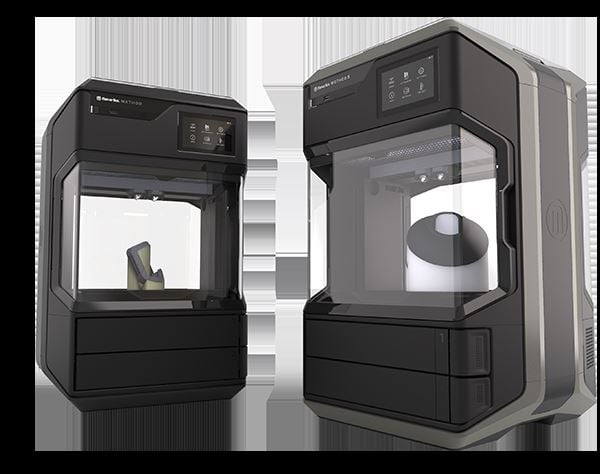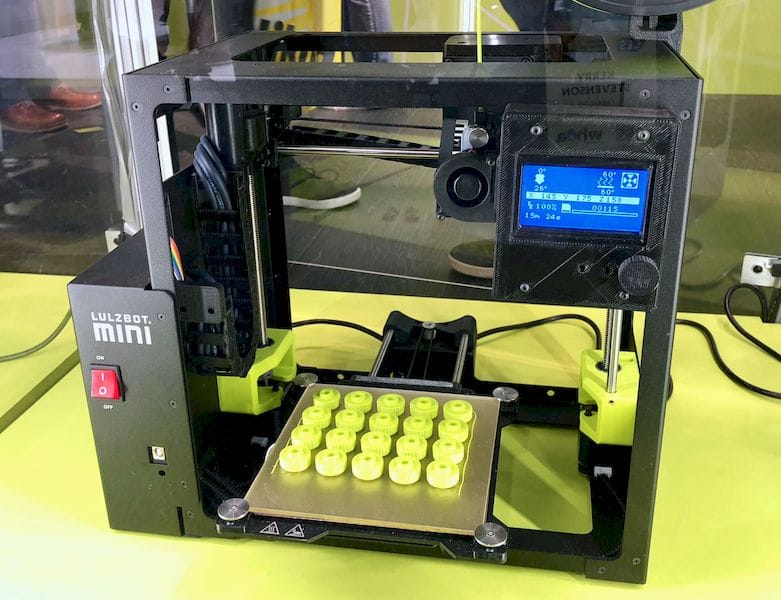![The METHOD (left) and METHOD X (right) 3D printers [Image: MakerBot]](https://fabbaloo.com/wp-content/uploads/2020/05/METHODprinters1_img_5eb0930cd46b4.jpg)
A few months after introducing its professionally-focused METHOD 3D printer, MakerBot is announcing an advanced update: meet the METHOD X.
The METHOD debuted in December, designed to bridge the gap between desktop and industrial 3D printing — that growing focus area for professional users. Described as a “performance” 3D printer, the METHOD features a heated build chamber and a good amount of Stratasys technology inside.
The METHOD X is taking that performance straight into manufacturing.
MakerBot executives provide us with a closer look.
METHOD X And “Real ABS 3D Printing”
For the initial announcement, we’ll look to comments from MakerBot CEO Nadav Goshen, with additional comments from the Vice Presidents of Engineering and of Product Development in our next look.
The focus for METHOD X is squarely manufacturing, where accessible 3D printing is enhancing production line operations and finished part creations.
“METHOD X supports real ABS 3D printing in a 100°C build chamber, with SR-30 soluble support,” Goshen told me, referencing Stratasys’ soluble support solution. “That combination does not exist in a desktop 3D printer. By providing the ability to print in real ABS, we are now entering or enabling manufacturing applications that are now accessible and closer to the engineer. METHOD X is designed for manufacturing, with the ability to print real end-use parts in ABS, and manufacturing tools like jigs and fixtures. Of course it is also part of the functional prototyping process, especially the latter part of it when it is more functional just before final injection molding.”
Goshen and the MakerBot team are especially keen to underscore the difference between “ABS 3D printing” as we know it today and the “real ABS 3D printing” capabilities of the METHOD X.
The two most common 3D printing materials in use with desktop operators are the relatively cheap PLA (polylactic acid) and higher-strength ABS (acrylonitrile butadiene styrene). Substantially stronger than PLA and not generally requiring the trickier environments of higher-temperature industrial materials, ABS filament has long been a mainstay of the desktop 3D printing market.
But it’s not the same quality as manufacturing-grade or injection moldable ABS.
“The first thing we would like to highlight is the differences between real ABS that METHOD X provides and what is currently available on the market. Other desktop players are interested in supporting ABS, but the ABS that the majority of them are providing is heavily formulated because it has to be adjusted to be 3D printed without the heated chamber. Also it doesn’t have soluble supports, so you print with breakaway supports that imposes a limitation on the geometries you can print,” Goshen explained.
“I think the promise for other desktop players is to print in ABS but as an engineer, when you try to fulfill that promise, you are really limited to the extent that ABS 3D printing on desktop machines is not applicable. With METHOD X we are providing a real ABS printing ability, which is very close in equivalence to industrial 3D printing and of course in a much more accessible and affordable way.”
MakerBot’s Thinking
Having debuted in a more consumer-oriented market segment, MakerBot continues to refine its focus as 3D printing matures.
The company itself has matured, and with the original METHOD launch several months back has also finally put to use one of its potentially biggest differentiators: its parent company.
Stratasys acquired MakerBot in 2013. METHOD is really the first MakerBot 3D printer to fully take advantage of technology from the company that originated FDM 3D printing. The soluble support material adds another dimension (if you will) of capability to desktop 3D printing and is fully a Stratasys product.
Stratasys is, of course, focused on industrial 3D printing. We may have wondered about the crossover between one of the original 3D printing giants and the company that became synonymous with desktop 3D printing — but the METHOD platform is showing just where that convergence lies.
METHOD X To Market
![[Image: MakerBot]](https://fabbaloo.com/wp-content/uploads/2020/05/METHODXApplication1_img_5eb0930d2c985.jpg)
The new machine will hit the market soon, with shipping set for the end of August.
The launch of METHOD X will have a ripple effect throughout the METHOD platform, Goshen noted as well, as pricing across the board will be impacted.
The original METHOD will now be available at a lower price point of $4999, while the new METHOD X “will inherit the previous price” of $6499.
“By lowering the price for METHOD, we are enabling more engineers to join and participate in our ecosystem and join our platform,” Goshen added.
Goshen and his colleagues also provided a look into the manufacturing focus of the system — more on that soon.
Via MakerBot











A key patent assigned to 3D Systems expires in 2022. What will this mean for 3D Systems and everyone else? We have some thoughts.